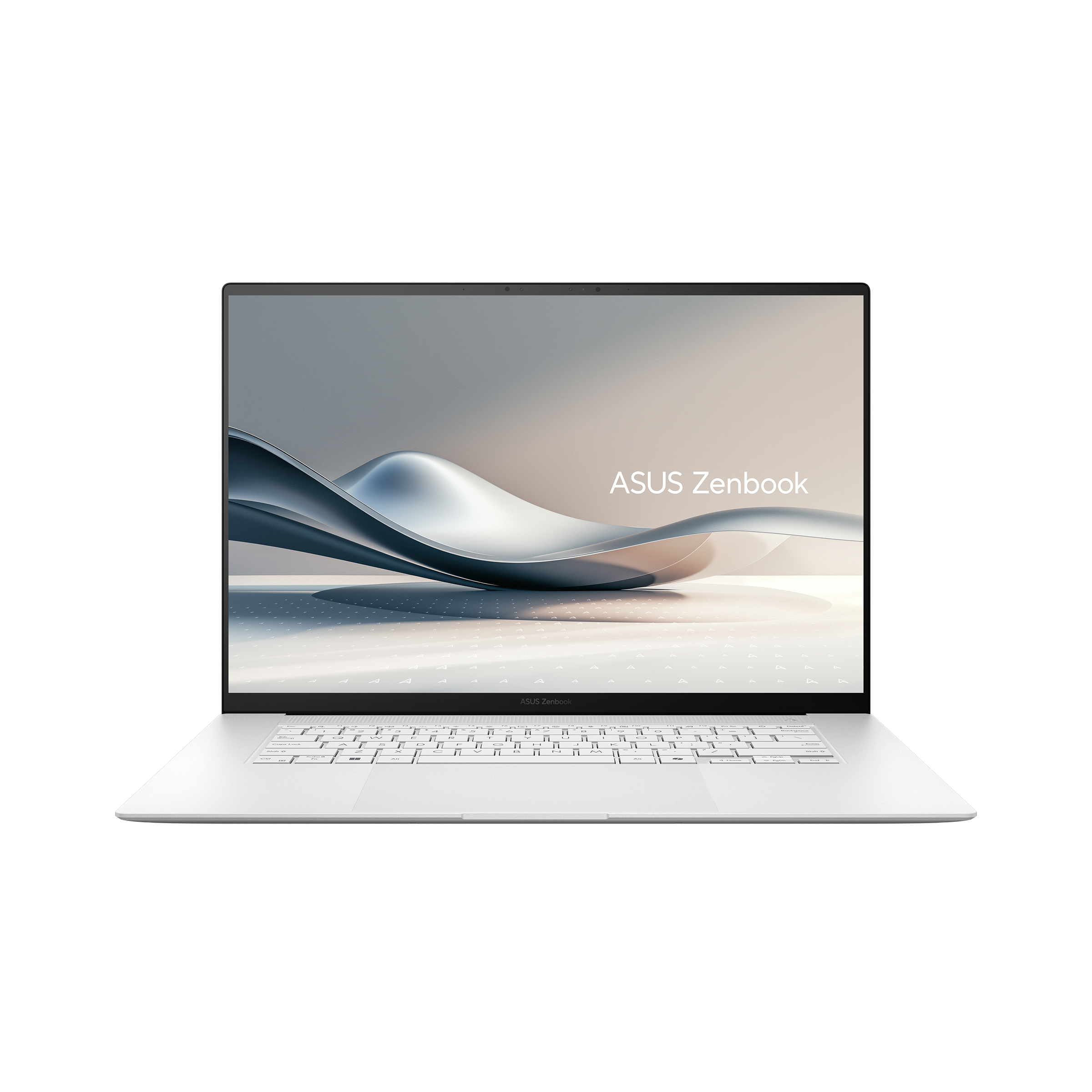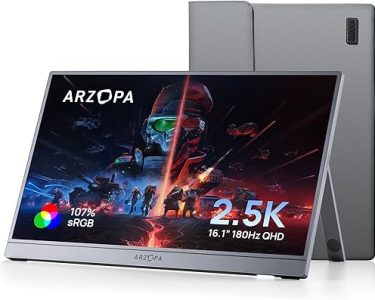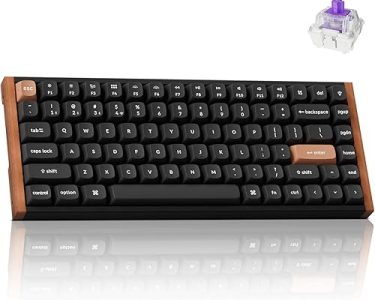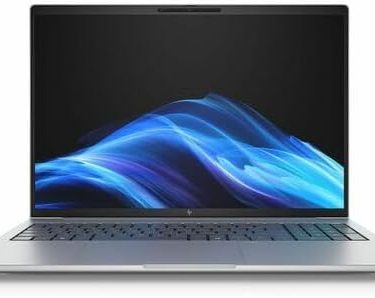Comparing Windows laptops to MacBooks, one obvious drawback has emerged in recent years: you can not have outstanding portability and performance with Windows.
Asus’s Zenbook S 16 is among the latest laptops with AMD processors that aim to upset the current order. It has an integrated Radeon 880M graphics card, 32GB of RAM, and a Ryzen AI 9 365 processor. Although it is a lovely system, there are some issues with it.
Let us address the big issue before getting into this review’s specifics: the heat. The warmth of the Asus Zenbook S 16 is excessive. It is a significant problem that soured our impression of an otherwise lovely laptop.
The highest temperature outside that I recorded was 130.6 °F. This was next to (not on) the fan vents on the back of the laptop, close to the middle. Although this maximum temperature was only seen during CPU testing, the laptop occasionally felt uncomfortable in less taxing circumstances. For instance, synchronizing numerous large files on OneDrive may entail more processing overhead than you anticipate and result in a noticeable increase in laptop temperature. It seems I am not the only one who has noticed this, as customer evaluations also express dissatisfaction with the laptop’s tendency to overheat.
Specs and features
There is no doubt that AMD’s Ryzen AI 9 365 is the Zenbook’s most significant feature. A Radeon 880M integrated GPU with 12 compute units, an integrated AI neural processing unit with a 50 trillion operation per second capability, and an integrated GPU with 10 cores—four regular Zen 5 cores and six less power-hungry Zen 5c cores—are all included in its configuration.
- AMD Ryzen AI 9 365 2.0GHz CPU; 32GB LPDDR5X memory; AMD Radeon 880M graphics/processor (12 CUs)
- AMD XDNA NPU with a maximum of 50 TOPS
- Display: 16-inch 16:10 aspect ratio OLED touchscreen with 2880 by 1800 resolution at up to 120 Hz
- Storage: Solid state drive (1TB M.2 NVMe PCIe 4.0)
- Webcam: 1080p webcam compatible with Windows Hello
- Connectivity: 1x USB 3.2 Gen 2 Type-A, 1x HDMI 2.1, 1x 3.5mm combo audio, 1x SD card reader, 2x USB-C 4.0 Gen 3 with DisplayPort Alternate Mode and Power Delivery
- Networking: Bluetooth 5.4, Wi-Fi 7.
- Windows Hello facial recognition as a biometric
- 78 watt-hours of battery capacity; 13.92 x 9.57 x.51 inches in dimensions
- 3.31 pounds in weight
- Retail price: $1,699.99
Asus does not skimp on other amenities however, as the laptop has a terabyte of solid-state storage, two USB 4.0 ports, a 16-inch OLED display, Wi-Fi 7, and 32 GB of memory. It costs about $1,700, so it is not cheap, but on paper, it seems like good value.
Design and build quality
Several new Asus laptops have what the company refers to as a “car aluminum” finish, including the Zenbook S 16. It produces a distinctive matte texture by fusing ceramic to an aluminum surface.
I like it, especially on the Zenbook S 16 I received with the Scandinavian White finish. I have been critical of certain Asus laptops for having a lifeless, generic appearance, but the Zenbook S 16 stands out from the competition thanks to its attractive finish. Strangely, the less costly model I evaluated is the only one with the white colorway. Owners of faster Ryzen AI processors can choose a less striking gray color scheme.
Apart from appearances, the Zenbook S 16’s design prioritizes combining performance and portability. The laptop is less than 14 inches broad and only half an inch thick, with to narrow bezels on all sides, even with its potent processor and robust integrated graphics. Moreover, it weighs only roughly 3.3 pounds. For a 16-inch device, this is about as portable as it gets; however, some exceptions, such as LG’s Gram laptops, are substantially lighter.
Connectivity
The left side of the Asus Zenbook S 16 has two USB-C 4.0 ports. Both ports provide power delivery and DisplayPort alternative mode, so you may use one to power an external display or charge your laptop. Either of these ports can be used to charge the laptop with the 65W charger that comes with it.
A small letdown is that there is just one USB-A port to go along with the USB-C connections. While the Acer Swift Edge 16 has a second USB-A port, which I would have preferred, other rival devices have none at all. An SD card reader, an HDMI 2.1 port, and a 3.5mm audio jack round out the variety of connectivity choices.
Moreover, wireless connectivity is good. The laptop is compatible with Bluetooth 5.4 and Wi-Fi 7, the most recent iterations of the Wi-Fi and Bluetooth standards. Since I anticipate that these iterations of each standard will be applicable for another five to ten years, this should make the laptop future-proof in terms of wireless networking.
Performance
A small letdown is that there is just one USB-A port to go along with the USB-C connections. While the Acer Swift Edge 16 has a second USB-A port, which I would have preferred, other rival devices have none at all. An SD card reader, an HDMI 2.1 port, and a 3.5mm audio jack round out the variety of connectivity choices.
Moreover, wireless connectivity is good. The laptop is compatible with Bluetooth 5.4 and Wi-Fi 7, the most recent iterations of the Wi-Fi and Bluetooth standards. Since I anticipate that these iterations of each standard will be applicable for another five to ten years, this should make the laptop future-proof in terms of wireless networking.
The Asus Zenbook S 16 and AMD’s new CPU both have a slow start in PCMark 10, a synthetic multi-workload test. Here, the Zenbook performs worse than the majority of its competitors, trailing the Intel Core Ultra 7 and only narrowly outperforming the Intel Core Ultra 5 125H in the Lenovo Yoga 7i 16-inch. The Ryzen AI 9 branding suggests that this laptop should have excellent performance, but it doesn’t.
In Cinebench R23, the Zenbook’s multi-core performance falls well short of rivals such as the Dell Inspiron 16 Plus, although it does surpass the Intel Core Ultra 5 125H. The situation is not much better. That would not come as a surprise given that the 16-core Intel Core Ultra 7 155H has more cores than the 10-core Ryzen AI 365. Nevertheless, this is a noteworthy victory margin for Intel.
Battery life
Asus equips the Zenbook S 16 with a rather small 78-watt-hour battery. That may not seem like much for a 16-inch laptop, but the power-efficient Ryzen AI processor appears to be making the most of it.
Using a 4K version of the short film Tears of Steel, our usual battery test yielded a battery life of around 13.5 hours for the Zenbook S 16.
For a 16-inch laptop, that is a good result, outperforming many of its rivals that we have recently evaluated, like the Acer Swift Edge 16 and Dell Inspiron 16 Plus. It demonstrates that buyers in this price range can choose between battery life and performance.
But in terms of battery life, the latest generation of Copilot Plus PCs with Qualcomm chips—like the Samsung Galaxy Book4 Edge—have a clear advantage. In our test, several laptops with Qualcomm processors reach or surpass 20 hours of durability.
Conclusion
AMD’s Ryzen AI 9 365 makes a middling debut in a mid-range laptop with the Asus Zenbook S 16. Although the processor’s performance is not terrible, it also does not stand out. I think it is odd that AMD is marketing this processor as the Ryzen AI 9 when, on this laptop at least, its performance is not all that different from the AMD Ryzen 7 8840U.
Even less enjoyable are the extraordinarily high external temperatures of the laptop when it is operating, which make using it very uncomfortable. The laptop’s performance statistics appear considerably worse as a result.
It is unfortunate because the Zenbook S 16 is a decent mid-range laptop in all other respects. The large touchpad, stunning OLED display, and ceraluminum finish are all features I appreciate, making the laptop a pleasure to use daily. It is a sophisticated, thin device that seems to be too thin to support the Ryzen AI 9 365.





